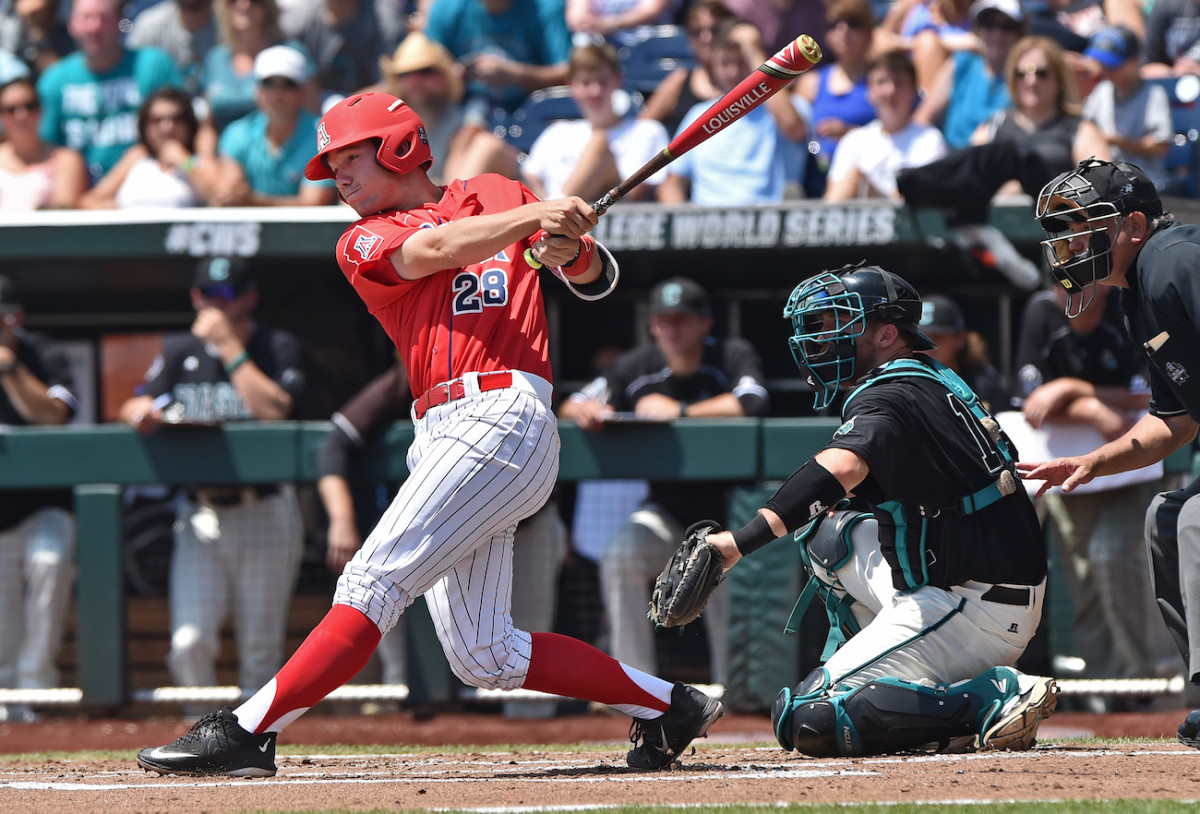The Great Baseball Bat Debate

Red Sox vs. Yankees. Celtics vs. Lakers. Cowboys vs. Redskins. Xbox vs. PlayStation. Coke vs. Pepsi. Star Wars vs. Star Trek. All rivalries, or things that make people choose sides. Today, we focus on another very important debate: What kind of baseball bat is the best?
To answer that question, one must consider how athletes transition from college, where players use aluminum bats, composite bats made of carbon fiber, or bats that are a combination of the two. (All bats must meet the same performance standards.) These athletes then move to the minor leagues and the majors, where the players exclusively use wood bats.
Another league that uses wood bats is the Cape Cod Baseball League, or the CCBL, the premier summer baseball league for college players.
The college season ends in June around the start of the CCBL, giving the players only a few days to adjust to wood bats. That’s if they’re lucky. Some players who make it to the College World Series only have hours to make the transition.
But how do they make that transition?
“I just try to take as many swings as possible,” said Michael Cantu, a catcher from the University of Texas. “I hit in the batting cage, I hit off a tee, I pick a bat module I like and just try to get a good feel for a bat. The teams in the CCBL try to make the transition as easy as they can.”
“My first game here was weird, because I had been in the College World Series, then I took a week off, and my first swing with a wood bat was here in a game,” explained TCU outfielder Josh Watson.

Added Oregon State University outfielder Trevor Larnach, “It’s hard at first because in college you are never worried about breaking your bat, and when something like that comes into play, it messes with your mental game.”
Now we know how players transition, but which bat do they prefer? Of the four people I asked, three said wood, and one said metal/composite. The funny thing is they all said that the bat that they prefer helps you round up the ball, or that it’s more forgiving. Our three wood lovers explained:
“I just like the sound it makes when you hit the ball really well with a wood bat,” said Cantu.
“There’s more feel in the wood than there is in metal,” said JJ Matijevic, an Arizona Wildcat.
“With a wood bat you can get in a groove; you can learn how to hit a baseball the proper way,” said Larnach.
On the other side is Tyler Lawrence, who plays for Murray State. “I think every hitter prefers metal,” he said. “You can miss a ball, not square it up, and still get a double or a home run with a metal bat. I don’t think that’s even possible with a wood bat.”
Lawrence is actually correct, and science proves his point. An experiment appearing in The Research Quarterly in October of 1997 showed that the speed of an average hit with a metal bat is almost four miles per hour faster than that of a wood bat. Metal bats are lighter by more than five ounces on average, which increases a player’s bat speed.
But Cantu, Watson, and Larnach would be quick to say that they never said it was easier to hit with a wood bat or that it was more forgiving. They just said it had better feel.
Lawrence is not alone on the metal side. Washington Nationals All-Star Anthony Rendon would choose metal for the same reasons.
“Come on!” he said when asked about his preference. “The old metal bats were the best, but then — [the NCAA] actually changed it. My last year in college, they changed them to composite bats, and those bats are terrible. But the old metal bats, I would take that over wood any day of the week. You can get jammed with a metal bat and still hit that ball 250 feet into the gap or into the outfield. With a wood bat, that bat is breaking, and it’s a little blooper to shortstop. A little more concentration — you have realize you have to put the barrel on the ball a little more often.”
So, which side are you on?
Photographs by (from top): Stan Grossfeld/The Boston Globe/Getty Images; Peter Aiken/Getty Images
